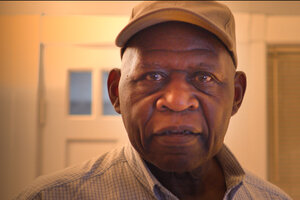In one man’s quiet fight, a window on eviction’s toll
Low-income renters with disabilities get supplemental assistance – but it’s not enough. Our video examines this affordable housing crisis.

BOSTON
Frank Sharpe’s living room is crowded with U-Haul boxes. The veteran, a septuagenarian, hopes not to need them. But he faces eviction and the prospect of shelter life.
Mr. Sharpe, who has been diagnosed with diabetes and arthritis, already is disproportionately burdened by his rent: Housing is considered affordable when it costs no more than 30% of an individual’s income, and his $800 rent consumes 60% of his monthly disability check. Now it is poised to double. He has been applying for subsidized housing, but waitlists can be years long, and his options are dwindling.
His plight reflects the affordable-housing crisis faced perhaps most acutely by disabled Americans, who live in poverty at more than twice the rate of those without disabilities. More than 10 million disabled, working-age Americans participate in safety-net or income-support programs. Among them, 4.6 million receive a monthly Supplemental Security Income of around $800 and cannot afford decent housing anywhere in the U.S. without additional rental assistance. Also, federal rent aid reaches only 1 in 4 at-risk renters.
“As a result, [people with disabilities] end up homeless, in institutions, or in congregate settings like group homes,” says Lisa Sloane, senior policy adviser at Technical Assistance Collaborative, a human services nonprofit. That, she says, raises the risk of exposure to COVID-19. As the federal eviction moratorium moves toward a March 31 end, housing advocates are calling for more aid programs targeted specifically at renters with disabilities.
Mr. Sharpe has obtained assistance with applying for access to more apartments and in appealing for extensions to his current lease. “I’m determined to press forward,” he says, “and fight for my rights.”

